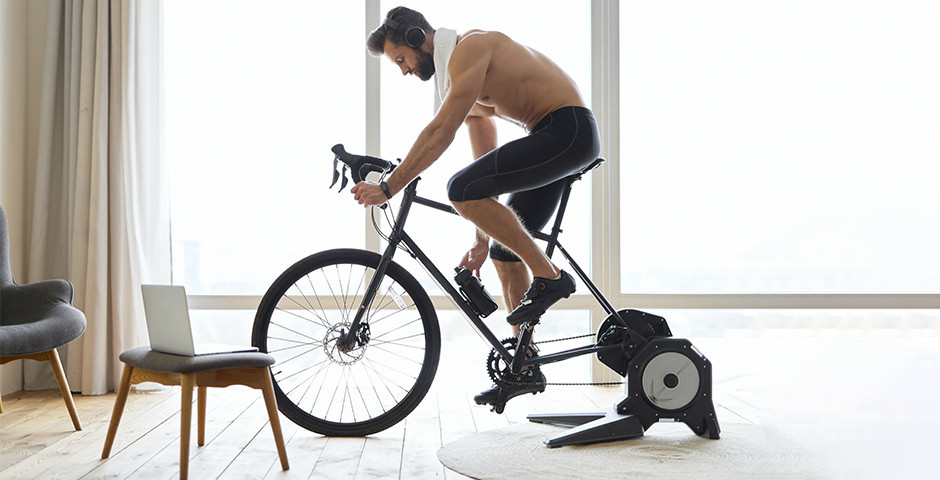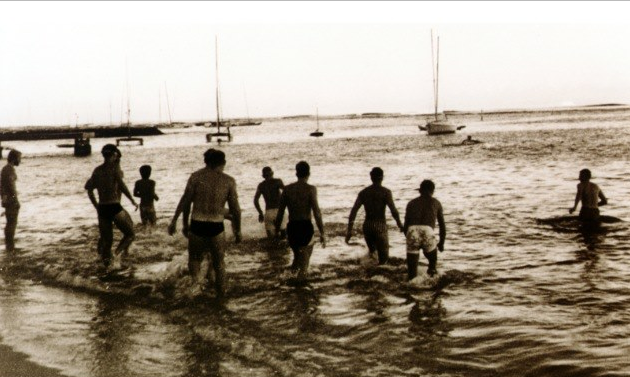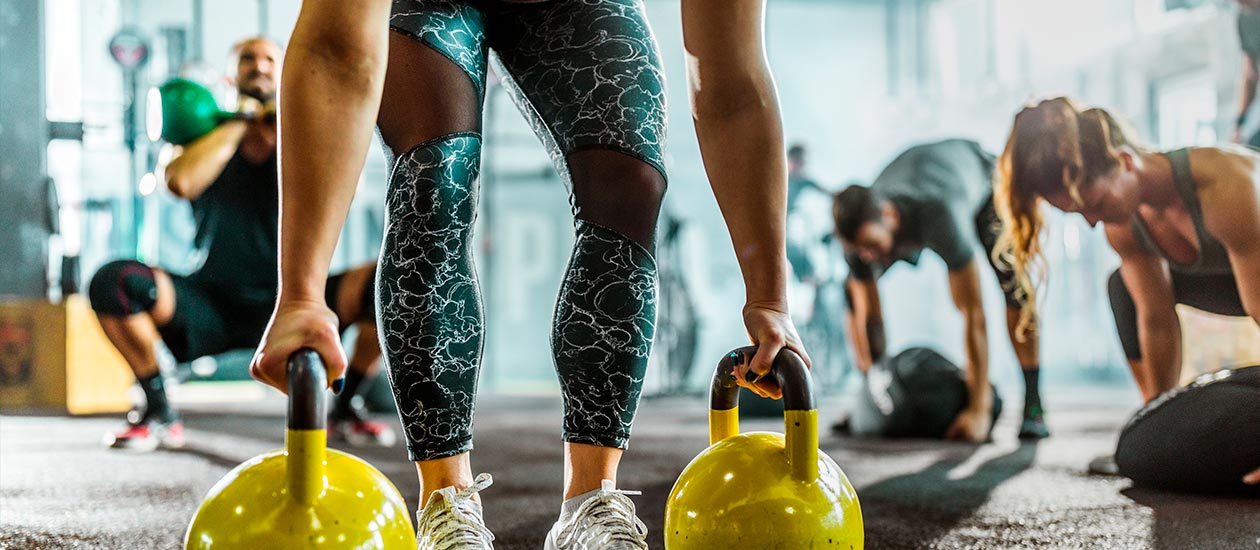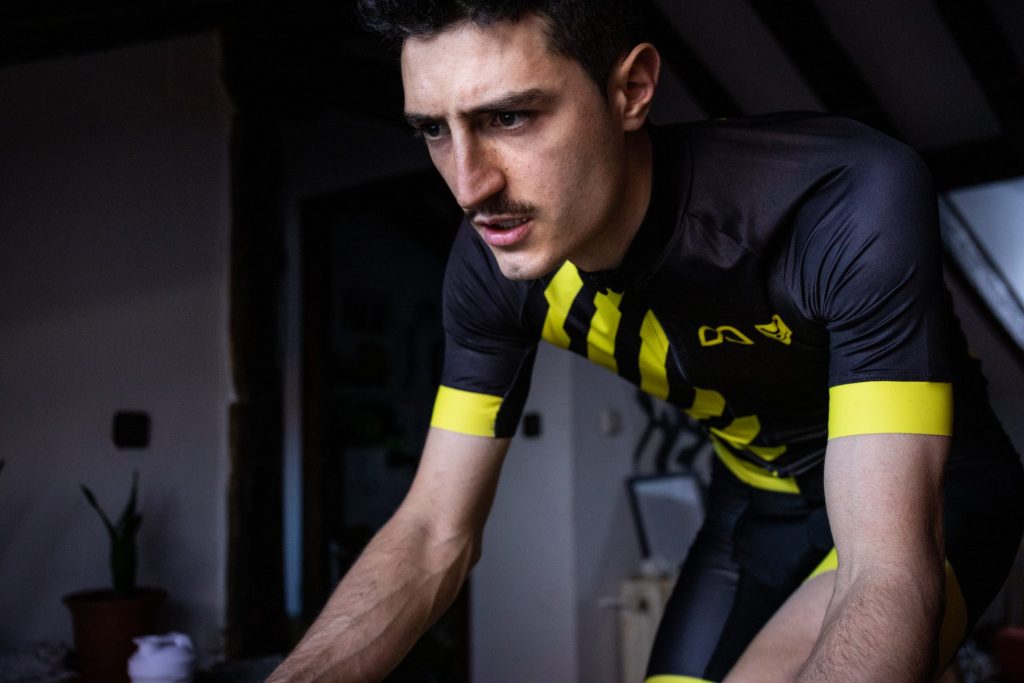Rest is a fundamental aspect of both physical and mental performance, especially for those looking to improve their fitness or who face high demands in their daily activities. However, when we talk about rest, we don’t just mean long breaks without activity; we also refer to active recovery.
Just ask any professional cyclist. You’ve probably seen them on the rollers after finishing a stage more than once. Their secret? A flawless approach to active recovery in cycling.
This concept has gained popularity in the sports and health fields as it offers an effective way to optimize recovery and enhance overall performance. In this article, we’ll explore what active recovery is, its benefits, and how to implement it correctly to achieve the best results.
What is active recovery?
Active recovery refers to engaging in light physical activities during rest periods instead of complete inactivity. Walking, gentle stretching, relaxed swimming, or practicing yoga are some examples of active recovery.
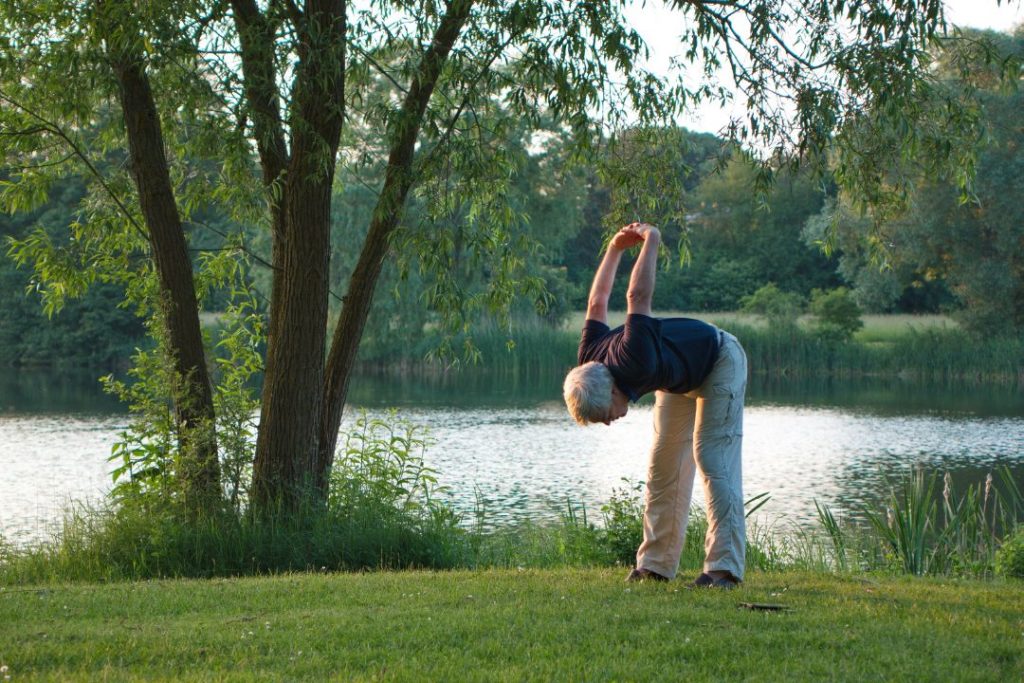
The main idea is to keep the body moving moderately to improve circulation, reduce lactic acid buildup, and promote faster, more efficient recovery.
The key is to keep the intensity low so that these activities do not place additional physical demands on the body but instead aid in muscle and cardiovascular system recovery.
Benefits of Active Recovery for Enhancing Cycling Performance
Without proper recovery, the body cannot repair muscle tissues or adapt to physical effort, which can lead to chronic fatigue and injuries. Moreover, active recovery in cycling not only speeds up the recovery process but also enhances endurance, prevents injuries, and improves metabolic efficiency.
Enhancing Endurance and Performance
Incorporating recovery training sessions allows cyclists to maintain training volume without compromising the quality of their main sessions. These sessions help to:
- Boost mitochondrial efficiency: Low-intensity aerobic activity improves mitochondrial function, increasing ATP energy production.
- Preserve neuromuscular plasticity: It prevents disconnection between the nervous system and muscles, maintaining coordination and pedaling technique.
- Accelerate muscle adaptation: It enables more efficient recovery, promoting muscle growth and strengthening.
Reducing Muscle Fatigue and Preventing Injuries
Muscle fatigue results from the accumulation of metabolic waste and muscle fiber damage. Active recovery helps counteract these effects by:
- Enhancing muscle oxygenation, which speeds up toxin elimination.
- Regulating inflammation, reducing oxidative stress and the buildup of inflammatory cytokines.
- Improving flexibility and joint mobility, preventing muscle imbalances that could lead to injuries.
Let’s take a deeper look at these aspects.
Why Is Active Recovery Important for Muscle Recovery and Performance?
One of the most extensively studied aspects of sports training is the impact of active recovery on muscle regeneration. During physical exercise, especially high-intensity activities, muscles experience significant stress, leading to small damages or microtears in their fibers. These microtears are a natural part of the muscle adaptation process, but for this adaptation to be effective, proper recovery is essential.
This process is known as supercompensation. After an intense workout, the body experiences fatigue and wear. If it gets adequate rest, it doesn’t just recover—it improves, becoming better prepared for future exertion. However, if recovery is insufficient, fatigue accumulates, negatively affecting performance and increasing the risk of overtraining (commonly referred to as muscle overload).
In this context, active recovery plays a crucial role. Engaging in low-intensity physical activity during recovery periods speeds up muscle regeneration by improving blood circulation in affected areas. This process helps eliminate waste products and delivers essential nutrients needed for muscle repair. As a result, muscles are better prepared to handle upcoming training sessions or competitive events.
At cellular level, active recovery influences several key processes:
- Metabolite Removal: Intense exercise generates waste products like lactic acid, which can lead to fatigue and muscle stiffness. Active recovery helps eliminate these by increasing blood flow.
- Muscle Protein Synthesis: Muscle fiber damage activates anabolic pathways such as mTOR (mammalian target of rapamycin), which stimulates protein synthesis and muscle tissue regeneration.
- Regulation of Oxidative Stress: Exercise generates free radicals that can cause cellular damage. Active recovery enhances the production of antioxidant enzymes like superoxide dismutase (SOD) and catalase, reducing oxidative stress.
- Glycogen Replenishment: Muscles rely on glycogen as their primary energy source. During active recovery, glucose uptake remains elevated, accelerating the replenishment of energy reserves.
Active recovery has proven effective in alleviating Delayed Onset Muscle Soreness (DOMS), the discomfort that typically appears 24 to 72 hours after intense exercise and can even hinder daily activities. Keeping the body in motion through light activities helps reduce the severity of this soreness, promoting a smoother and more effective recovery.
Additionally, active recovery helps maintain overall physical condition by preventing the loss of mobility and flexibility. Prolonged inactivity can lead to stiffness, which may increase the risk of injuries or a decline in performance.
Another key benefit lies in mental well-being, particularly in managing stress. Engaging in low-intensity exercise, especially outdoors, enhances mood, lowers stress levels, and boosts overall well-being. In summary, active recovery supports not only physical recovery but also mental health, which is essential for optimal performance.
Differences Between Passive and Active Recovery in Cycling
Understanding the distinction between active and passive recovery is essential to determine which approach is best suited for a given recovery goal.
- Passive recovery involves completely stopping physical activity, allowing the body to recover without any additional stimulus. This method is useful in cases of extreme fatigue, severe injuries, or illnesses, where any movement could worsen the condition.
- Active recovery, as we’ve discussed, helps maintain blood flow and mobility without overloading the muscles. It is particularly beneficial after high-intensity training sessions or competitions, where fatigue is significant but no injuries prevent light movement. In these situations, active recovery can prevent stiffness and promote faster recovery compared to passive rest.
Ultimately, the choice between active and passive recovery depends on physical condition, fatigue levels, and specific recovery goals. However, in most cases, active recovery provides significant advantages, particularly in accelerating recovery and maintaining overall fitness.
Examples of Active Recovery Sessions for Cyclists of All Levels
There are many ways to incorporate active recovery into a routine, and the best choice depends on individual activity levels and personal preferences. Here are some popular options:
- Walking: A 20-30 minute light walk is an excellent way to boost circulation without overloading the muscles. It’s particularly recommended after an intense training session or a sedentary workday.
- Dynamic stretching: Gentle, controlled stretches help improve flexibility and reduce muscle stiffness. These can be done at any time of the day and are especially useful after exercise.
- Swimming: Relaxed swimming engages all muscle groups without high-impact stress. The water’s natural resistance also helps improve circulation while keeping movements smooth and controlled.
- Yoga or Pilates: These disciplines combine gentle movements with breathing techniques, promoting relaxation and recovery. They are great options for active recovery as they enhance mobility and balance.
- Low-intensity cycling: Riding at a relaxed pace is an effective way to maintain cardiovascular activity without adding excessive fatigue. It’s particularly useful for cyclists who want to stay in motion without straining their muscles.
Easy Pedaling Routines for Beginners
For beginner cyclists, effective active recovery can be achieved with 20-40 minute rides at low intensity (50-60% of max heart rate or <55% of FTP) on flat terrain or on a roller with minimal resistance.
Mobility and Strength Exercises for Intermediate Level
Intermediate cyclists can complement their recovery training with mobility and light strength exercises, such as:
- Dynamic stretching (hip, ankle, and spine mobilization).
- Core and stability work (glute bridges, planks, and resistance band exercises).
- High-cadence, low-resistance pedaling sessions (ideal for muscle recovery without inducing fatigue).
Advanced Recovery Training Protocols for Experts
Advanced cyclists can incorporate more specific active recovery strategies, such as:
- Recovery rides in low power zones (<55% FTP) to improve circulation.
- Muscle electrostimulation sessions to reduce inflammation.
- Contrast baths (cold-heat) and sports massage to accelerate muscle regeneration.
Practical Tips for Effective Recovery Training
To reap the benefits of active recovery, it’s important to follow some basic guidelines:
Controlling Intensity and Duration in Active Recovery
For active recovery in cycling to be effective, controlling the intensity and duration of sessions is essential. The ideal approach is:
- Keep the intensity low (50-60% of max heart rate or <55% of FTP).
- Limit easy pedaling to 30-45 minutes to avoid additional stress.
- Prioritize flat terrain or indoor training with minimal resistance.
Nutrition, Hydration, and Other Key Aspects of Active Recovery
Nutrition and hydration play a crucial role in recovery. It’s recommended to:
- Consume a mix of carbohydrates and proteins within the first hour after training.
- Maintain proper hydration to replenish electrolytes and prevent cramps. Check out our guide about recovery drink for cyclists.
- Prioritize quality sleep (7-9 hours per night) to optimize muscle regeneration. Learn more about how to improve sleep.
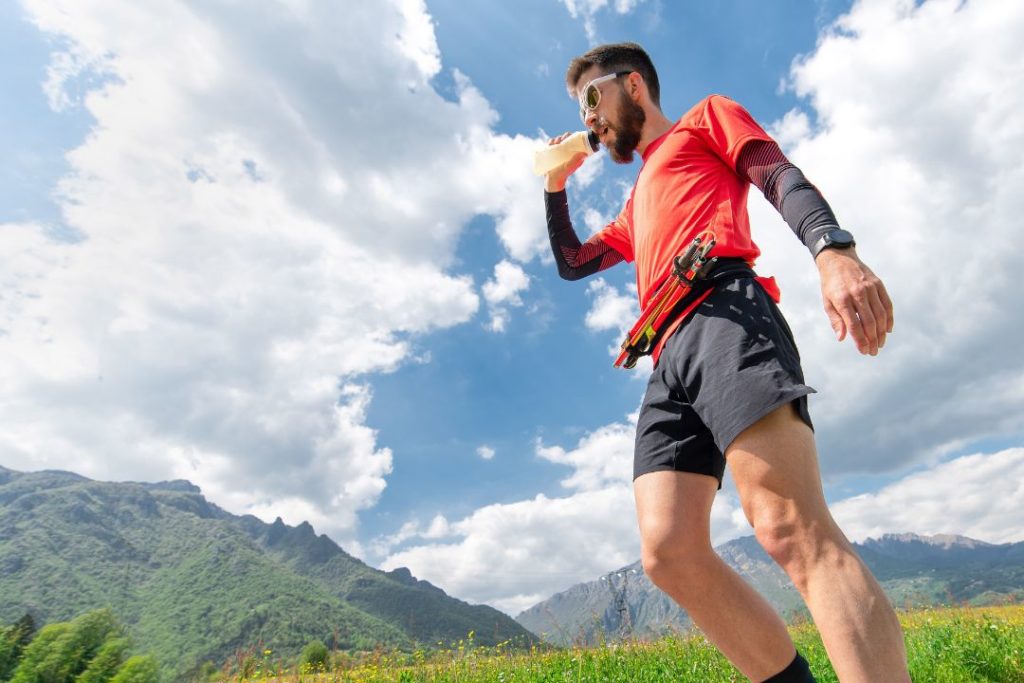
Common Mistakes When Implementing Active Recovery
- Not incorporating active recovery into the routine: Planning light activities on rest days can significantly improve recovery without interfering with performance.
- Not listening to your body: Paying attention to the body’s signals is essential. If you experience pain or exhaustion, it’s better to opt for passive recovery or consult a professional.
- Repeating the same exercises: Changing active recovery activities helps target different muscle groups and keeps things interesting.
- Not allowing enough recovery time: While active recovery is beneficial, it should not replace complete rest days when the body truly needs to recover. The balance between active and passive recovery is crucial to prevent overtraining.
- Choosing activities that aren’t suitable for your level of fatigue or fitness: This can lead to injuries. It’s important to select activities that match your fitness level and progress gradually. One great option, as mentioned, is low-intensity cycling, and with bad weather approaching, using a cycling simulator is an ideal alternative.
If you want to take your active recovery in cycling to the next level, try roller sessions with the BKOOL platform, where you can do personalized workouts from home. Optimize your recovery without losing your pedaling rhythm and keep your performance at its best. Your body and performance will thank you!
BKOOL is the most complete cycling simulator on the market, try it FREE for 7 days!
 Go to BKOOL
Go to BKOOL
